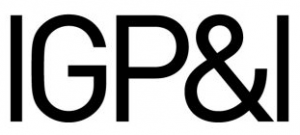On 13 June 2019, two tankers suffered explosion incidents in the Gulf of Oman causing major damage to the vessels. Both vessels have been abandoned by the crew.
Some reports indicate that the type and extent of damage experienced by the two vessels could be the result of anti-ship missiles. This hypothesis may be strengthened by the findings of the investigation into the attacks on four oil tankers that took place on the morning of 12 May 2019 off the port of Fujairah. According to a press release of 6 June 2019, preliminary findings from that investigation indicate that the Fujairah attacks were caused by limpet mines placed on the vessels by divers as “part of a sophisticated and coordinated operation carried out by an actor with significant operational capacity, most likely a state actor.”
Assessment of threats
According to a recent intelligence report issued by the Norwegian Shipowner’s Mutual War Risk Insurance Association (DNK):
The threat towards tankers and other oil and gas related shipping assets operating in the Persian Gulf, Strait of Hormuz and North Western Gulf of Oman, is currently assessed as HIGH.
The threat towards remaining categories of merchant vessels operating in the Persian Gulf, Strait of Hormuz and North Western Gulf of Oman, is currently assessed as MODERATE.
Recommendations
We advise ship operators and their masters to exercise extreme caution when operating in the Gulf of Oman/Strait of Hormuz/Persian Gulf region and to:
follow the relevant guidance provided by BMP5 and the Global Counter Piracy Guidance;
undertake a new ship and voyage specific threat risk assessment before entering any region where there has been an incident, or the threat level has changed, and review the Ship’s Security Plan; and
stay in close contact with ship’s agent and other local sources to obtain the most up to date and reliable information available at any given time.
Some Flag Administrations may require a heightened security level for the Gulf of Oman/ Strait of Hormuz/Persian Gulf region, meaning that ships must implement additional protective measures in accordance with the formal Ship Security Plan (SSP). As an example, the Norwegian Maritime Authorities on 13 June 2019 instructed Norwegian ships arriving Strait of Hormuz within the boundaries of N25° - N28° and E054° - E058° to implement security measures as described in their SSP according to ISPS/MarSec level #2.
Members and clients should also note the additional advice provided by OCIMF and INTERTANKO and contained in our alert “Maritime security update on Fujairah incident” of 23 May 2019, recommending that ship operators send the following guidance to ships:
Maintain a full and vigilant bridge watch.
Maintain a strict communications watch and establish communication with all vessels coming close.
Ensure strict boarding controls are in place.
Only lower accommodation gangways or ladders when necessary.
Rig outboard lighting where possible provided they do not interfere with keeping a safe lookout, particularly over the stern and rig/use searchlights if available.
Conduct visual checks of the hull.
Report any suspicious/irregular activity immediately to the UKMTO (+442392222060).
Monitor relevant VHF and other communication channels.
Check that all fire-fighting equipment is available for immediate use. Make sure the emergency fire pump is available if any maintenance is being undertaken.
Keep the Automatic Information System (AIS) on. There is no need to complete the field stating the last or next port of call.
We thank DNK for sharing their latest intelligence reports and for their permission to reprint parts of their threat assessment and the above map.



